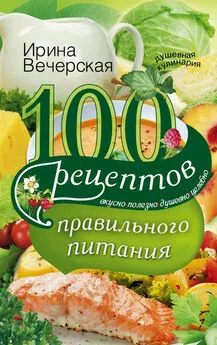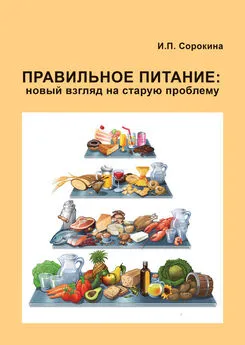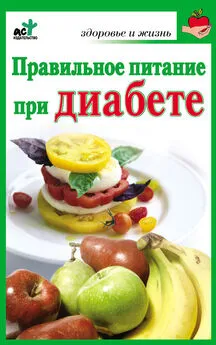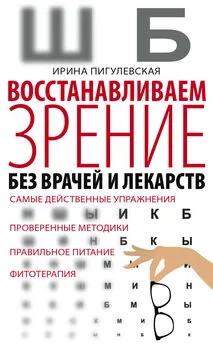Ирина Брехт - Правильное питание как минное поле
- Название:Правильное питание как минное поле
- Автор:
- Жанр:
- Издательство:ООО «ЛитРес», www.litres.ru
- Год:2019
- ISBN:нет данных
- Рейтинг:
- Избранное:Добавить в избранное
-
Отзывы:
-
Ваша оценка:
Ирина Брехт - Правильное питание как минное поле краткое содержание
Правильное питание как минное поле - читать онлайн бесплатно ознакомительный отрывок
Интервал:
Закладка:
15. Ferriday D, Bosworth ML, Lai S, et al. Effects of eating rate on satiety: A role for episodic memory? Physiology & Behavior. 2015;152(Pt B):389–396. doi:10.1016/j.physbeh.2015.06.038.
16. Robinson E et al. A systematic review and meta-analysis examining the effect of eating rate on energy intake and hunger. Am. J. Clin. Nutr. 2014;100(1):123–151.
17. Viskaal-van Dongen M., Kok F.J., de Graaf C. Eating rate of commonly consumed foods promotes food and energy intake. Appetite. 2011;56(1):25—31
18. de Graaf C. Texture and satiation: the role of oro-sensory exposure time. Physiol. Behav. 2012;107(4):496–501.
19. Ford A et al. Treatment of childhood obesity by retraining eating behaviour: randomised controlled trial. Br. Med. J. 2010;340:b5388.
20. Kokkinos A et al. Eating slowly increases the postprandial response of the anorexigenic gut hormones, peptide YY and glucagon-like peptide-1. J. Clin. Endocrinol. Metab. 2010;95(1):333–337.
21. Li J., Zhang N., Hu L., Li Z., Li R., Li C., Wang S. Improvement in chewing activity reduces energy intake in one meal and modulates plasma gut hormone concentrations in obese and lean young Chinese men. Am. J. Clin. Nutr. 2011;94(3):709–716.
22. Cornier MA et al. Effects of short-term overfeeding on hunger, satiety, and energy intake in thin and reduced-obese individuals. Appetite. 2004 Dec;43(3):253—9.
23. Yeomans MR, Blundell JE, Leshem M. Palatability: response to nutritional need or need-free stimulation of appetite? Br J Nutr 2004; 92 (suppl. 1): S3—S14.
24. De Graaf C, De Jong LS, Lambers AC Palatability affects satiation but not satiety. Physiol Behav. 1999 Jun;66(4):681—8.
25. Bobroff EM, Kissileff HR. Effects of changes in palatability on food intake and the cumulative food intake curve in man. Appetite. 1986 Mar;7(1):85–96.
26. Stubbs RJ1 et al. The effect of covertly manipulating the energy density of mixed diets on ad libitum food intake in ‘pseudo free-living’ humans. Int J Obes Relat Metab Disord. 1998 Oct;22(10):980—7.
27. Ello-Martin JA et al. The influence of food portion size and energy density on energy intake: implications for weight management. Am J Clin Nutr. 2005 Jul;82(1 Suppl):236S-241S. doi: 10.1093/ajcn/82.1.236S.
28. Holt SH, Miller JC, Petocz P, Farmakalidis E. A satiety index of common foods. Eur J Clin Nutr. 1995 Sep;49(9):675—90.
29. Greene LF et al. Weight maintenance 2 years after participation in a weight loss program promoting low-energy density foods. Obesity (Silver Spring). 2006 Oct;14(10):1795—801.
30. C. Peter Herman, Janet Polivy, Patricia Pliner, Lenny R. Vartanian. (2015) Mechanisms underlying the portion-size effect. Physiology & Behavior 144, pages 129–136.
31. Kerameas K et al. The effect of portion size and unit size on food intake: Unit bias or segmentation effect? Health Psychol. 2015 Jun;34(6):670—6. doi: 10.1037/hea0000160.
32. Wansink B, Painter JE, North J. Bottomless bowls: why visual cues of portion size may influence intake. Obes Res. 2005 Jan;13(1):93—100.
33. Williams EK, Chang RB, Strochlic DE, Umans BD, Lowell BB, Liberles SD. Sensory neurons that detect stretch and nutrients in the digestive system. Cell. 2016;166(1):209–221. doi:10.1016/j.cell.2016.05.011.
34. Paintal AS. A study of gastric stretch receptors. Their role in the peripheral mechanism of satiation of hunger and thirst. The Journal of Physiology. 1954;126(2):255–270.
35. Houpt KA. Gastrointestinal factors in hunger and satiety. Neurosci Biobehav Rev. 1982 Summer;6(2):145—64.
36. Geliebter A, Hashim SA. Gastric capacity in normal, obese, and bulimic women. Physiol Behav. 2001 Nov-Dec; 74(4–5): 743–746.
37. Geliebter A, Schachter S, Lohmann-Walter C, Feldman H, Hashim SA. Reduced stomach capacity in obese subjects after dieting. Am J Clin Nutr. 1996 Feb; 63(2): 170–173.
38. Geliebter A, et al. Gastric capacity, test meal intake, and appetite hormones in binge eating disorder. Physiology & behavior. 2004; 81(5): 735–740.
39. Ciampolini M, Lovell-Smith HD, Kenealy T, Bianchi R. Hunger can be taught: Hunger Recognition regulates eating and improves energy balance. International Journal of General Medicine. 2013;6:465–478. doi:10.2147/IJGM.S40655.
40. Slochower J. Emotional labeling and overeating in obese and normal weight individuals. Psychosom Med. 1976;38(2):131–139.
41. Slochower J, Kaplan SP, Mann L. The effects of life stress and weight on mood and eating. Appetite. 1981;2(2):115–125.
42. van Strien T. Ice-cream consumption, tendency toward overeating, and personality. Int J Eat Disord. 2000;28(4):460–464.
43. Mela DJ. Eating for pleasure or just wanting to eat? Reconsidering sensory hedonic responses as a driver of obesity. Appetite. 2006;47(1):10–17.
44. Herman CP, Roth DA, Polivy J. Effects of the presence of others on food intake: a normative interpretation. Psychol Bull. 2003;129(6):873–886.
45. Harshaw C. Alimentary epigenetics: a developmental psychobiological systems view of the perception of hunger, thirst and satiety. Dev Rev. 2008;28(4):541–569.
46. Bohon C, Stice E, Spoor S. Female Emotional Eaters Show Abnormalities in Consummatory and Anticipatory Food Reward: A Functional Magnetic Resonance Imaging Study. The International journal of eating disorders. 2009;42(3):210–221. doi:10.1002/eat.20615.
47. Malagelada JR, Go VL, Summerskill WH. Different gastric, pancreatic, and biliary responses to solid-liquid or homogenized meals. Dig Dis Sci. 1979 Feb; 24(2): 101–110.
48. Fisher RS, Malmud LS, Bandini P, Rock E. Gastric emptying of a physiologic mixed solid-liquid meal. Clin Nucl Med. 1982 May; 7(5): 215–221.
49. 49 Chen L, Appel LJ, Loria C, et al. Reduction in consumption of sugar-sweetened beverages is associated with weight loss: the PREMIER trial. The American Journal of Clinical Nutrition. 2009;89(5):1299–1306. doi:10.3945/ajcn.2008.27240.
50. Hu FB. Resolved: there is sufficient scientific evidence that decreasing sugar-sweetened beverage consumption will reduce the prevalence of obesity and obesity-related diseases. Obes Rev 2013;14:606—19.
51. Hedrick VE, Davy BM, You W, Porter KJ, Estabrooks PA, Zoellner JM. Dietary quality changes in response to a sugar-sweetened beverage – reduction intervention: results from the Talking Health randomized controlled clinical trial. The American Journal of Clinical Nutrition. 2017;105(4):824–833. doi:10.3945/ajcn.116.144543.
52. Kit BK, Fakhouri TH, Park S, Nielsen SJ, Ogden CL. Trends in sugar-sweetened beverage consumption among youth and adults in the United States: 1999–2010. Am J Clin Nutr 2013;98:180—8.
53. Tate DF, Turner-McGrievy G, Lyons E, Stevens J, Erickson K, Polzien K, Diamond M, Wang X, Popkin B. Replacing caloric beverages with water or diet beverages for weight loss in adults: main results of the Choose Healthy Options Consciously Everyday (CHOICE) randomized clinical trial. Am J Clin Nutr 2012;95:555—63.
54. Zoellner J, Chen Y, Davy B, You W, Hedrick V, Corsi T, Estabrooks P. Talking Health, a pragmatic randomized-controlled health literacy trial targeting sugar-sweetened beverage consumption among adults: rationale, design & methods. Contemp Clin Trials 2014;37:43–57.
55. Hedrick V, Davy B, Duffey K. Is beverage consumption related to specific dietary pattern intakes. Curr Nutr Rep 2015;4:72–81.
56. Duffey KJ, Popkin BM. Adults with healthier dietary patterns have healthier beverage patterns. J Nutr 2006;136:2901—7.
57. DiMeglio DP, Mattes RD. Liquid versus solid carbohydrate: effects on food intake and body weight. Int J Obes Relat Metab Disord 2000;24:794–800.
58. Malik VS, Schulze MB, Hu FB. Intake of sugar-sweetened beverages and weight gain: a systematic review. The American journal of clinical nutrition. 2006;84(2):274–288.
59. Centers for Disease Control and Prevention, Division of Nutrition, Physical Activity and Obesity (CDC) Rethink Your Drink. http://www.cdc.gov/healthyweight/healthy_eating/drinks.html.
60. United States Department of Agriculture (USDA) ChooseMyPlate.gov. http://www.choosemyplate.gov/food-groups/downloads/tentips/dgtipsheet19makebetterbeveragechoices.pdf.
61. American Medical Association (AMA) Action Plan for Healthy Eating. http://www.nwsphysicians.com/web/wp-content/uploads/2014/01/AMA-Healthy-Eating.pdf.
62. American Diabetes Association (ADA) Lose Weight by Eating Healthy. http://www.diabetes.org/living-with-diabetes/parents-and-kids/children-and-type-2/preventing-type-2-in-children.html.
63. American Heart Association (AHA) Replacing Sugary Drinks in Your Diet. http://www.heart.org/HEARTORG/GettingHealthy/NutritionCenter/SimpleCookingwithHeart/Rethink-Your-Drink-Reducing-Sugary-Drinks-in-Your-Diet_UCM_445267_Article.jsp.
64. American Academy of Pediatrics Kids Should Not Consume Energy Drinks, and Rarely Need Sports Drinks, Says AAP. http://www.aap.org/en-us/about-the-aap/aap-press-room/Pages/Kids-Should-Not-Consume-Energy-Drinks, – and-Rarely-Need-Sports-Drinks, – Says-AAP.aspx.
65. American Academy of Pediatrics (AAP) Sports Drinks and Energy Drinks for Children and Adolescents: Are They Appropriate? Pediatrics. 2011;127:1182–1189.
66. HBO The Weight of the Nation, Confronting America’s Obesity Epidemic. http://the weightofthenation.hbo.com/take-action/action/drink-water-instead-of-sugary-drinks.
67. World Cancer Research Fund International Inform people. http://www.wcrf.org/int/policy/nourishing-framework/inform-people.
68. Mum, Dad I Prefer Water! Educational Programme Promoting Water Drinking among Children. http://ec.europa.eu/health/nutrition_physical_activity/docs/ev20111128_co01_en.pdf.
69. Opal Water. The Original Cool Drink. http://www.marion.sa.gov.au/webdata/resources/files/OPAL-Water-CAS-Primary-Schools.pdf.
70. Mexican President Urges Citizens to Exercise to Fight Obesity. http://www.telegraph.co.uk/news/worldnews/centralamericaandthecaribbean/mexico/10419302/Mexican-president-urges-citizens-to-exercise-to-fight-obesity.html.
71. EPODE (Ensemble, Prévenons L’Obésité des Enfants) International Network EPODE and Similar Initiatives Across Europe. http://epode-international-network.com/
72. Water UK Wise Up on Water! www.waterforhealth.org.uk.
73. School Food Policy Country Factsheets Finland School Food Policy (Mandatory) www.ravitsemusneuvottelukunta.fi/attachments/vrn/kouluruokailu_2008_kevyt_swe_2.pdf.
74. Israeli Public Health Program Takes Aim at Diabetes. http://www.haaretz.com/news/israel/israeli-public-health-project-takes-aim-at-diabetes.premium-1.495159.
75. Harrold JA, Dovey TM, Blundell JE, Halford JC. CNS regulation of appetite. Neuropharmacology. 2012;63(1):3—17.
76. Perez-Escamilla R. et al. Dietary energy density and body weight in adults and children: A systematic review. Journal of the Academy of Nutrition and Dietetics (2012), 112(5), 671–684.
77. Maersk M et al. Sucrose-sweetened beverages increase fat storage in the liver, muscle, and visceral fat depot: a 6-mo randomized intervention study. Am J Clin Nutr. 2012 Feb;95(2):283—9. doi: 10.3945/ajcn.111.022533.
78. Gibson EL. Emotional influences on food choice: sensory, physiological and psychological pathways. Physiol Behav. 2006 Aug 30;89(1):53–61. Epub 2006 Mar 20.
79. Finlayson G, King N, Blundell JE. Liking vs. wanting food: importance for human appetite control and weight regulation. Neurosci Biobehav Rev. 2007;31(7):987—1002. Epub 2007 Mar 27
80. Siegel P. S. The completion compulsion in human eating. Psychological Reports. 1957;3:15–16.
81. Steenhuis I., Vermeer W. Portion size: Review and framework for interventions. International Journal of Behavioral Nutrition and Physical Activity. 2009;6:58.
Читать дальшеИнтервал:
Закладка:








![Артем Каменистый - Правильное питание [СИ]](/books/1146496/artem-kamenistyj-pravilnoe-pitanie-si.webp)

